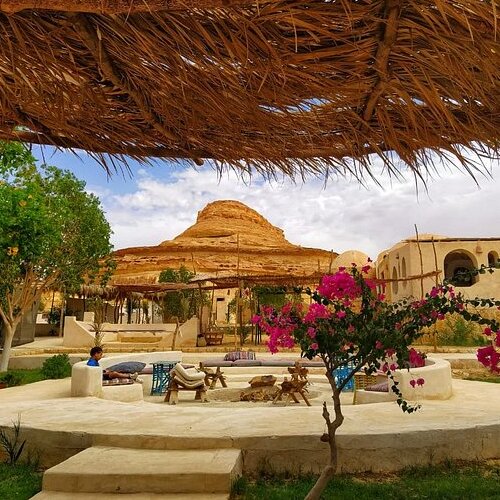Historical Tapestry
Siwa Oasis: Desert Retreat
Siwa Oasis, located in Egypt, is a place of deep historical and cultural significance. Its history, dating back to prehistoric times, reveals a connection with civilizations from Libya, North Africa, and the Nile Valley..
1. Ancient Beginnings and Cultural Connections
- Early Population: Siwa was inhabited by people from western civilizations, sharing cultural aspects with Libya, North Africa, and the Nile valley.
- Historical Names: Over the ages, from Greek and Roman times through the Middle Ages, Siwa has been known by various names.
2. Trade and Religion
- Trade Route Hub: The oasis was a crucial link for trade caravans traversing from the Nile valley to Libyan Mediterranean harbors, attracting traders from Africa and beyond.
- Religious Center: Siwa flourished as a religious hub, especially noted for the Oracle of Amun, which attracted many, including Alexander the Great.
3. Historical Events and Changes
- Persian Invasion: The 26th Dynasty ended with Cambyses’ invasion, whose army mysteriously disappeared in a sandstorm.
- Alexander the Great: His visit to the Oracle of Amun in 331 BC was a significant event, claiming his divine lineage from Zeus Amun.
- Decline: The spread of Christianity and the fall of the Roman Empire led to a decline in the sixth century AD, further impacted by the Arabian invasion in 640 AD.
4. Siwa Under Arabian Rule
- Choices for the Natives: Faced with the Arabian army, the Amazigh people chose to flee, leaving their treasures hidden.
- Settlement in Siwa: Finding the oasis, they settled here, creating a new home amidst its lush environment.
5. Siwa’s Evolving Governance
- Building the Citadel: In 1103 AD, the Amazigh built a citadel for protection against attacks and mosquitoes.
- Independent Governance: Siwa was governed independently for centuries, with unique laws and customs.
- Egyptian Conquest: In 1840, Mohamed Ali’s invasion ended Siwa’s independence, imposing new taxes and hardships.
6. Modern Siwa
- Opening Up to the World: President Anwar Sadat’s visit in 1977 marked a turning point, leading to improved accessibility and development.
- Educational and Social Advancements: The introduction of schools and services marked significant progress.
7. Population Growth and Expansion
- Fluctuating Population: From a mere forty in the twelfth century to around twenty thousand today, Siwa’s population continues to grow.
In summary, Siwa Oasis is not just a geographic location but a living historical entity. Its journey through various civilizations, trade importance, religious significance, and eventual integration into modern Egypt reflects a rich and varied past. The oasis continues to evolve, preserving its unique heritage while adapting to contemporary changes.
Created On March 25, 2020
Updated On January 26, 2024



